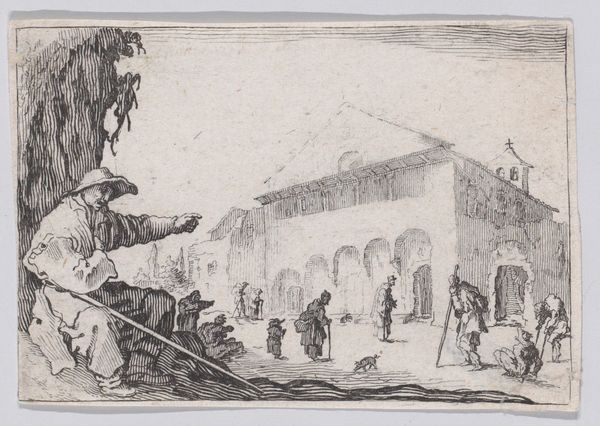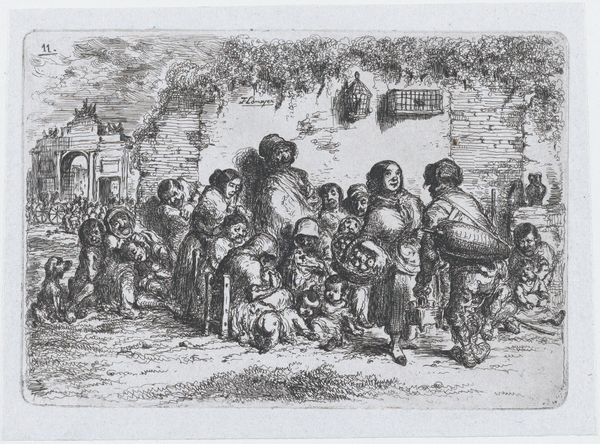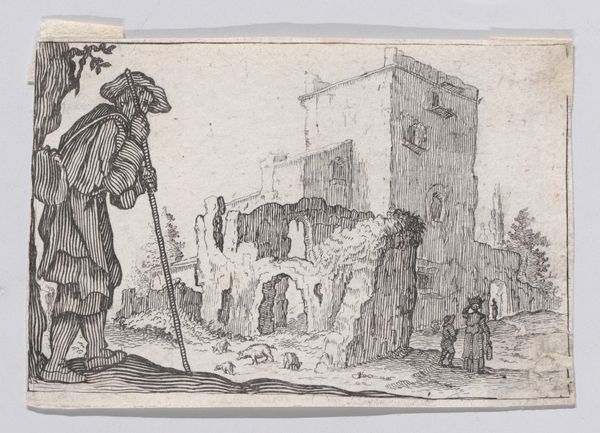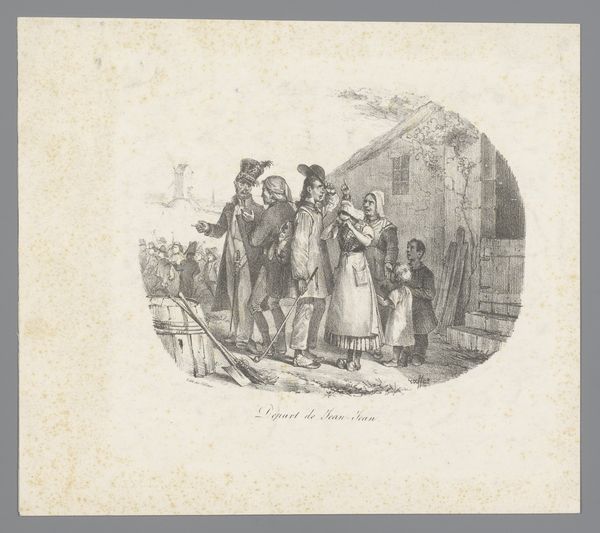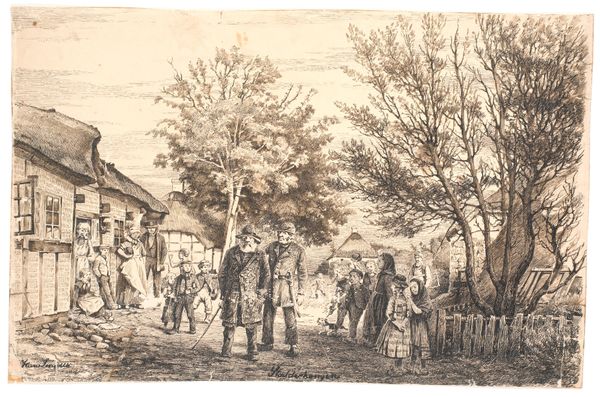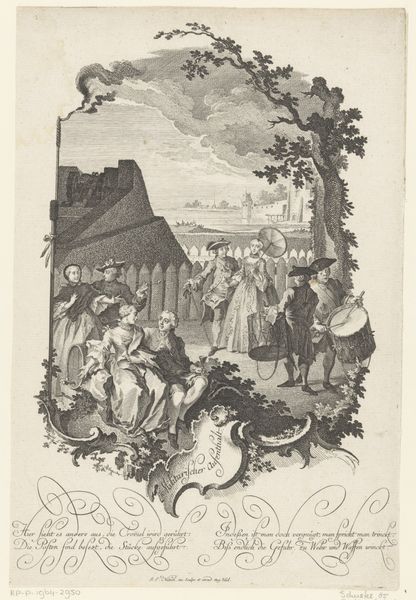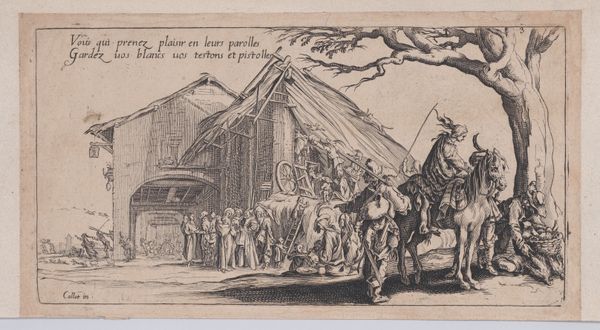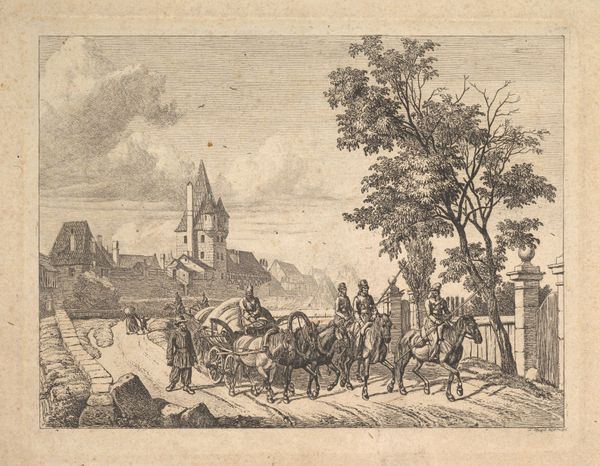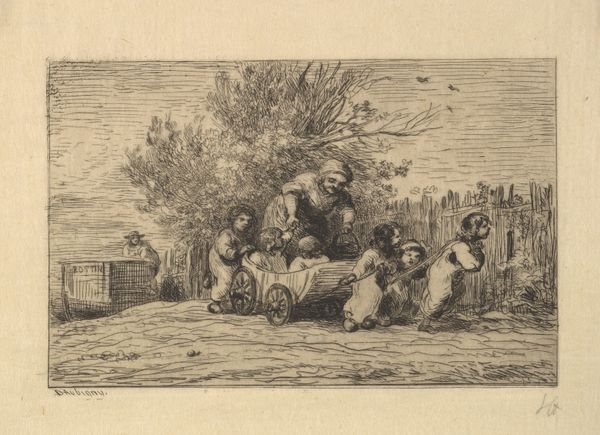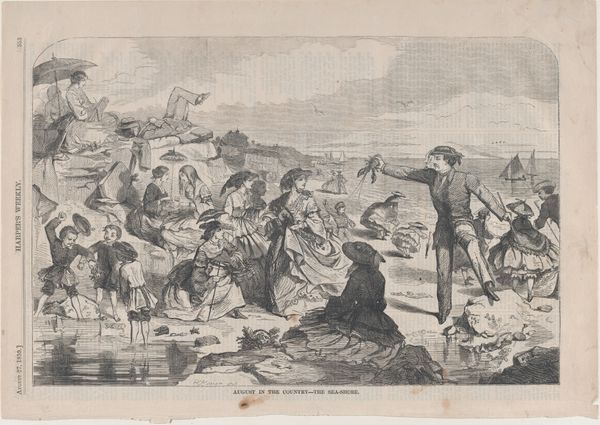
Reverse Copy of L'Auberge (The Inn), from "Les Caprices" Series A, The Florence Set 1620 - 1700
0:00
0:00
drawing, print, etching
#
drawing
#
baroque
# print
#
etching
#
genre-painting
Dimensions: Sheet: 2 1/16 x 3 3/16 in. (5.3 x 8.1 cm)
Copyright: Public Domain
Curator: I'm immediately struck by the chaos depicted in this scene. It’s like a freeze-frame of a very messy party about to spill out of control. Editor: And indeed it may, especially within an inn. We are looking at a print entitled "Reverse Copy of L'Auberge (The Inn), from "Les Caprices" Series A, The Florence Set". The anonymous piece was made between 1620 and 1700 and resides at the Metropolitan Museum of Art. Curator: The tilted perspective adds to the disorienting feeling. Are we supposed to be outside or inside this structure? It feels very liminal, with people crammed around the table, figures walking out front, and somebody in the doorway above. Editor: Inns have always been such sites of transition and transgression, physical places where social norms relax and the porous nature of community life reveals itself. Consider that doorway figure as symbolic. Curator: Interesting. To me, the clearest symbol is actually the inn’s sign, the rack supporting what looks like a ram's skull or horns— a symbol associated with feasting, virility and sometimes a warning about excess. Editor: Quite, quite. The composition subtly nods to older traditions while prefiguring others to come. Look at the table. It is about to erupt in the same way it might in an image from Hogarth, a century later. But look at the line and hatching used to give depth, an overtone from an earlier, starker age. Curator: It’s certainly lively. Is the mood convivial, or menacing? Those men near the table are certainly gesturing heatedly, perhaps drunk, perhaps starting to fight. It really does leave me wondering, "what happens next?" Editor: Perhaps it speaks to the double-edged nature of gathering, particularly the ritual and danger in communal space. This intersection, though frozen here, may feel surprisingly fresh when we gather even now. Curator: Yes, it acts as a looking glass that asks what our modern symbols of revelry and connection might say about us to future observers. Thank you!
Comments
No comments
Be the first to comment and join the conversation on the ultimate creative platform.
